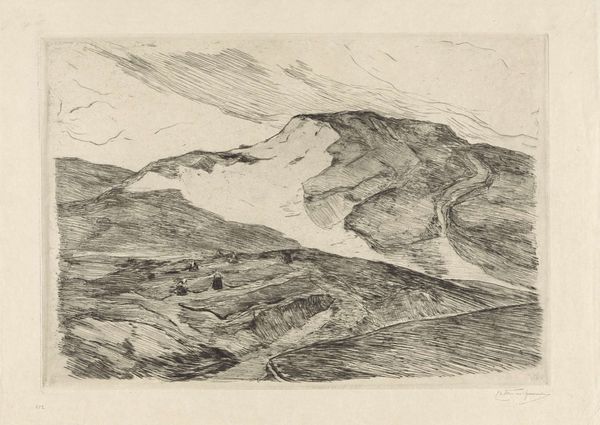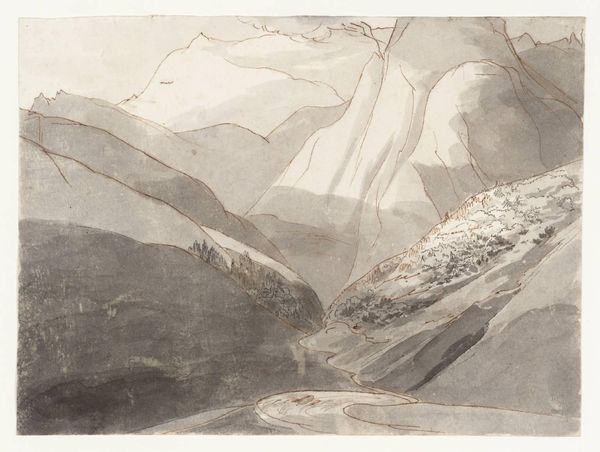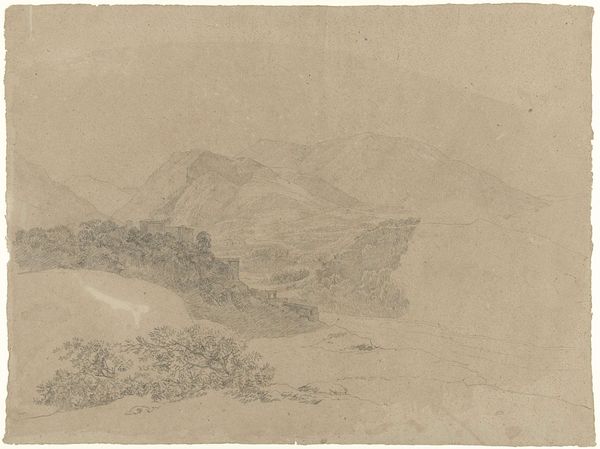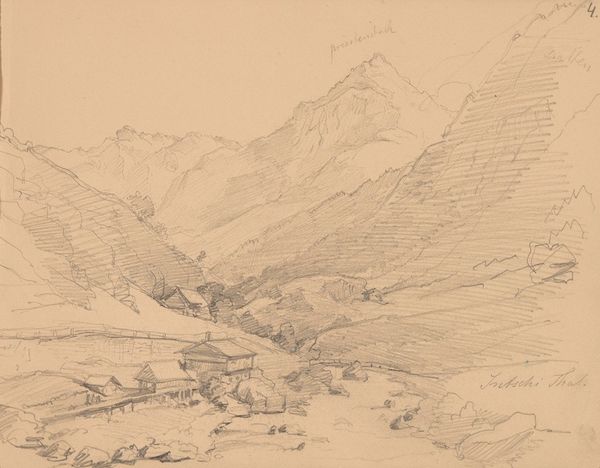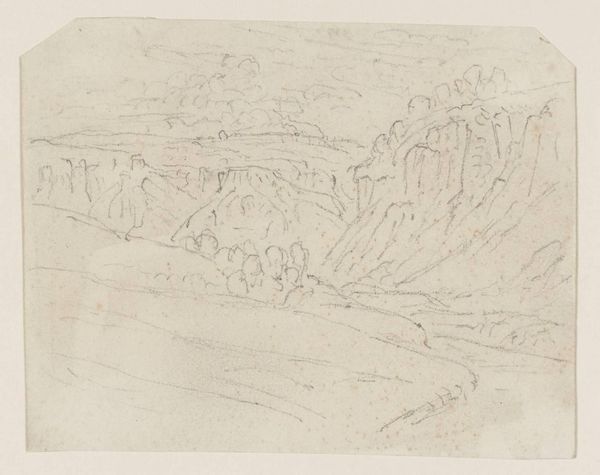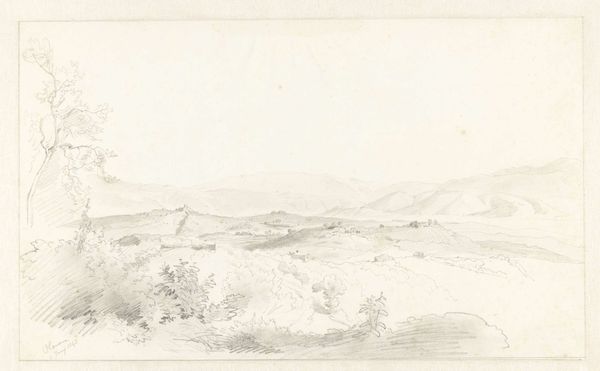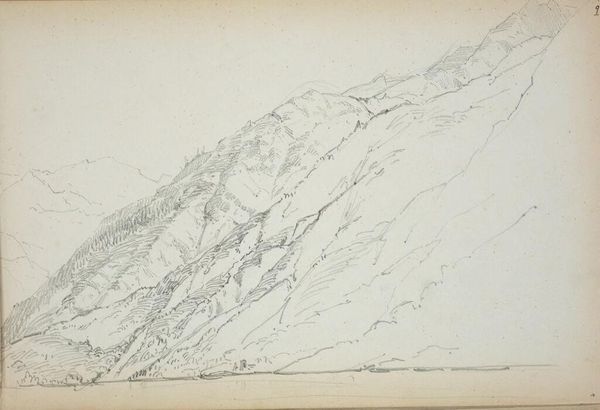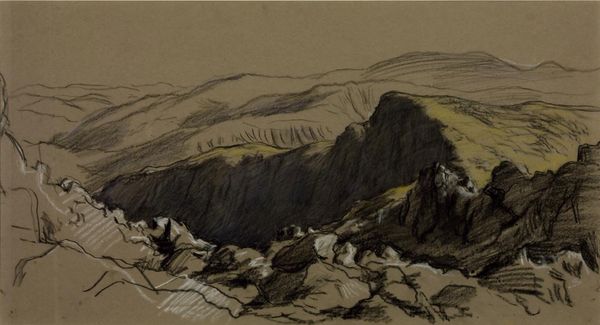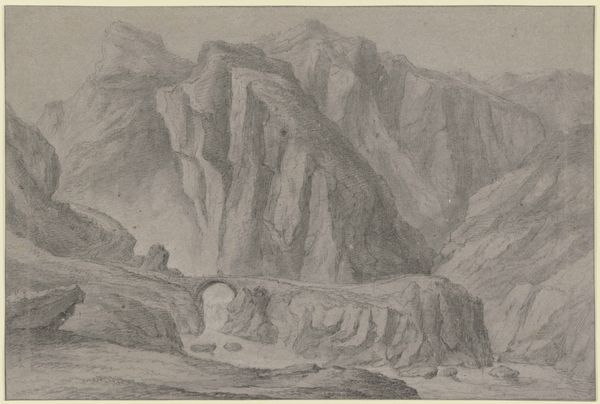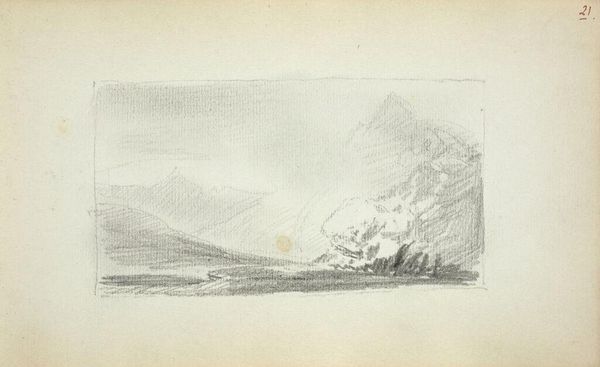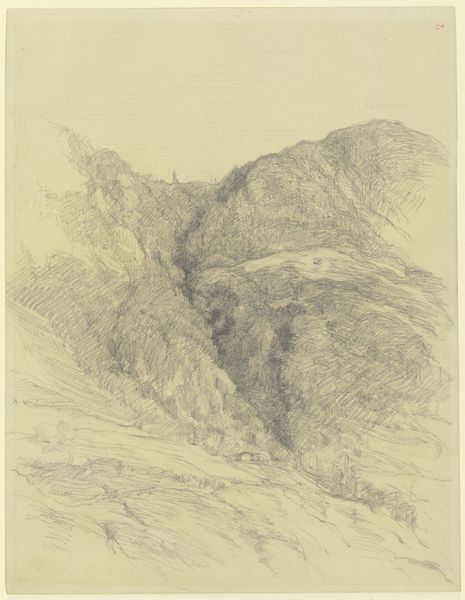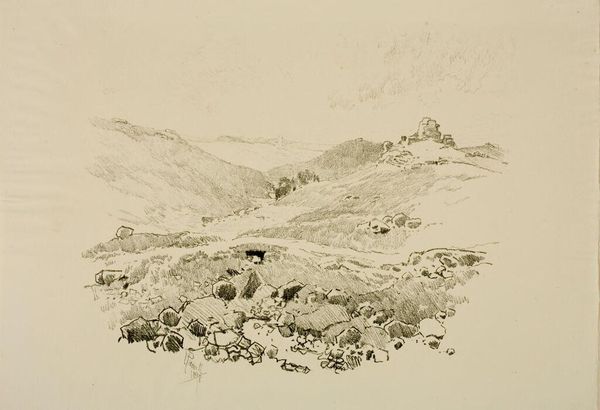
Dimensions: unconfirmed: 415 x 552 mm
Copyright: CC-BY-NC-ND 4.0 DEED, Photo: Tate
Curator: John Baptist Malchair's "Moel-y-Ffrydd" presents a stark, mountainous vista rendered in graphite. Editor: It's immediately striking—the monochromatic palette lends a sense of austere grandeur. Curator: Indeed. Malchair's mastery lies in his use of line—observe how he creates depth and volume. Editor: It's almost geological—the drawing seems to map power relations and land ownership. Curator: Perhaps, but its strength is in purely visual terms—the way the light defines the peaks. Editor: Regardless, I think this work shows landscape's role in defining British identity. Curator: I see it as more focused on formal relations, but I appreciate your cultural insights. Editor: And I appreciate your close readings—a great reminder of art's many layers.
Comments
Join the conversation
Join millions of artists and users on Artera today and experience the ultimate creative platform.
tate 6 months ago
⋮
Malchair, violinist and drawing master, was born in Cologne and came to England in 1754. He led the Oxford Music Room Band, which gave subscription concerts, from 1759 to 1792. By the late 1760s he had also built up a successful practice as a drawing master in Oxford, where, unconventionally, he encouraged direct study from nature. His own work shows a strong feeling for tonal effects. This drawing, made on a tour of Wales in 1795, is one of a group that passed to Malchair's pupil William Crotch, Professor of Music at Oxford and by about 1806 a friend of John Constable. It is possible that Constable saw Malchair's Welsh drawings before he set out to make his own drawings of the mountainous Lake District in 1806. Gallery label, September 2004
